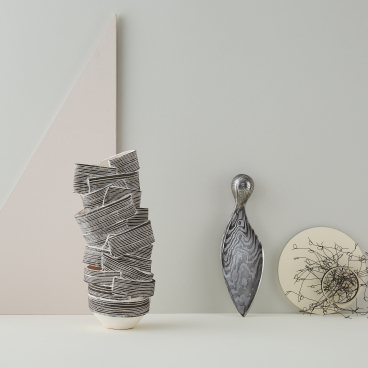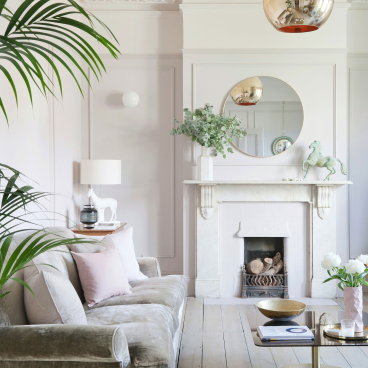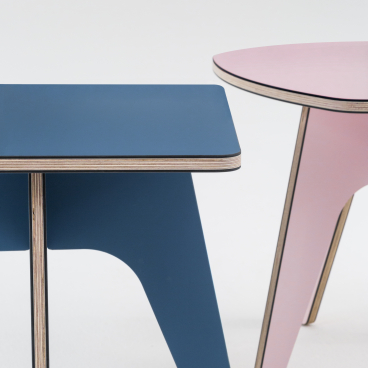Inside Horisaki, the famous hatmakers' workshop in the Swedish forests of Småland
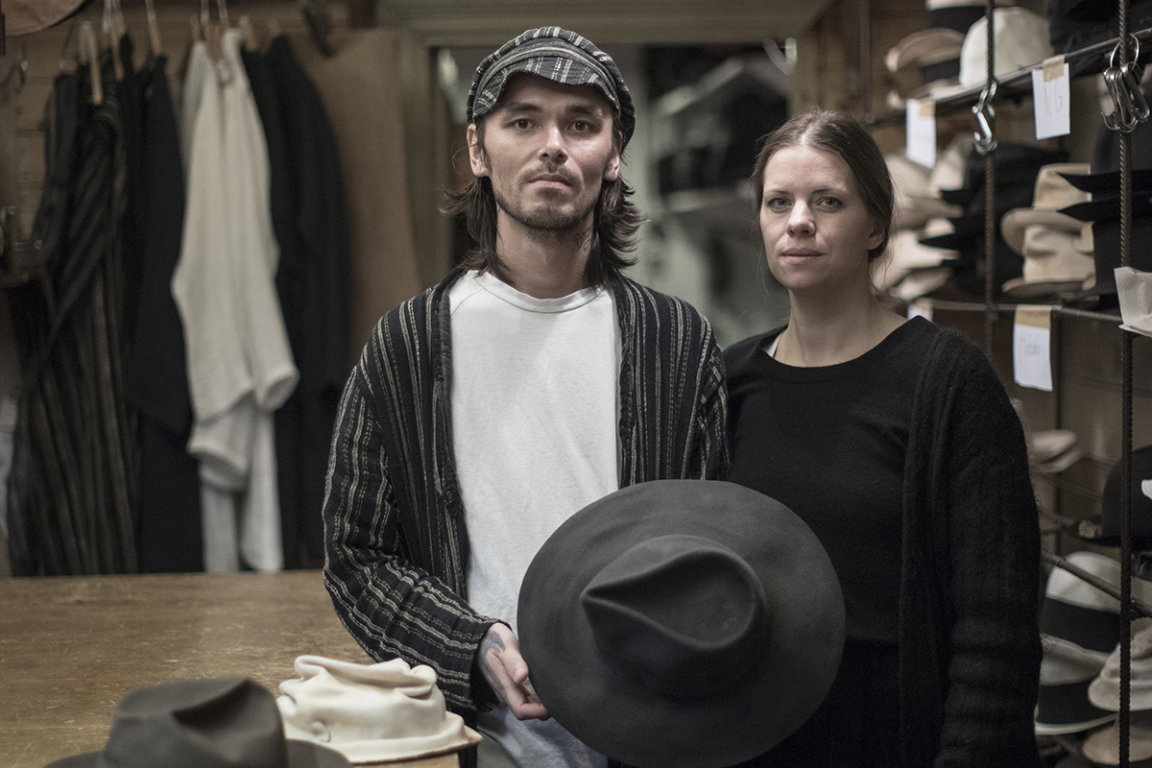
Photography by Tina Stafrén
Hidden away in the Swedish forests of Småland, under the low winter sun, lies the workshop and home of Horisaki, a design studio that crafts handmade artisanal hats using traditional millinery techniques.
Run by husband and wife Makoto and Karin Horisaki, they merge Japanese and Swedish design and take inspiration from the beautiful nature that surrounds them. And their customers, which include Lady Gaga, come from all over the world.
Choosing the finest materials in earthy shades, they create textures using experimental techniques like burning them with fire, adding what has become a signature effect. On a beautiful cold and crisp day, we visited their workshop to find out more.
How did you come to work together and launch your own hat business?
Karin: We met in Stockholm in 2010 and started working together almost immediately. I'd previously taken an apprenticeship in hatmaking and attended a two-year course at Tillskärarakademin, a millinery school in Gothenburg – one of the few in Europe. It's where you don't work with customers; you just learn different millinery techniques every day. It's very intensive. And then I took the final exam, before launching our own studio.
Makoto: And I did nothing. I'm her 'bitch'. [Laughs] Also, we have our own style. What we do, it's not like a traditional milliner or hatmaker. It's like totally our own style. I think we both learn from each other to come up with our own ideas.
Where do you get your materials from?
Karin: Different sources. Our rabbit fur felt is from the Czech Republic. Our beaver fur felt is from Canada. As you can see, both have different textures and can be crafted into interesting shapes. I love working with my hands and sculpting various types of hats. It's about letting the materials speak to you before you determine what they'll become.
What's the finish on some of them? It's so beautiful
Karin: When we started out, we developed this particular finish ourselves. This, for example, is rabbit fur felt which we have burnt to get this leathery texture. It was very well received during our first trip to Paris Fashion Week six years ago. And so we've been using this technique ever since.
We also create a lot of other finishes. So this is beaver fur felt and a similar style to our other hats but it has a softer feel. Although this isn't burnt, we do set most of our hats on fire. [Laughs]
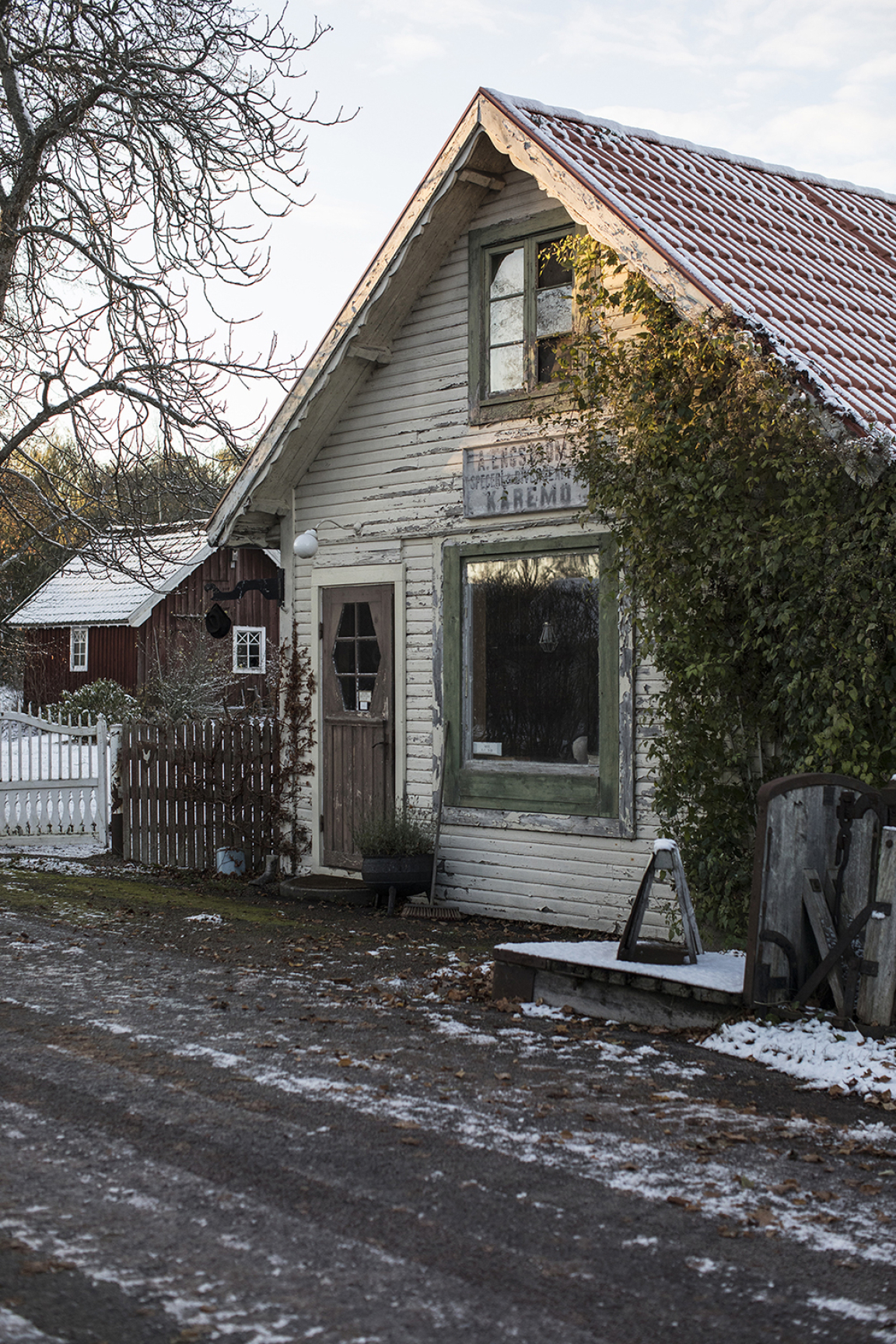
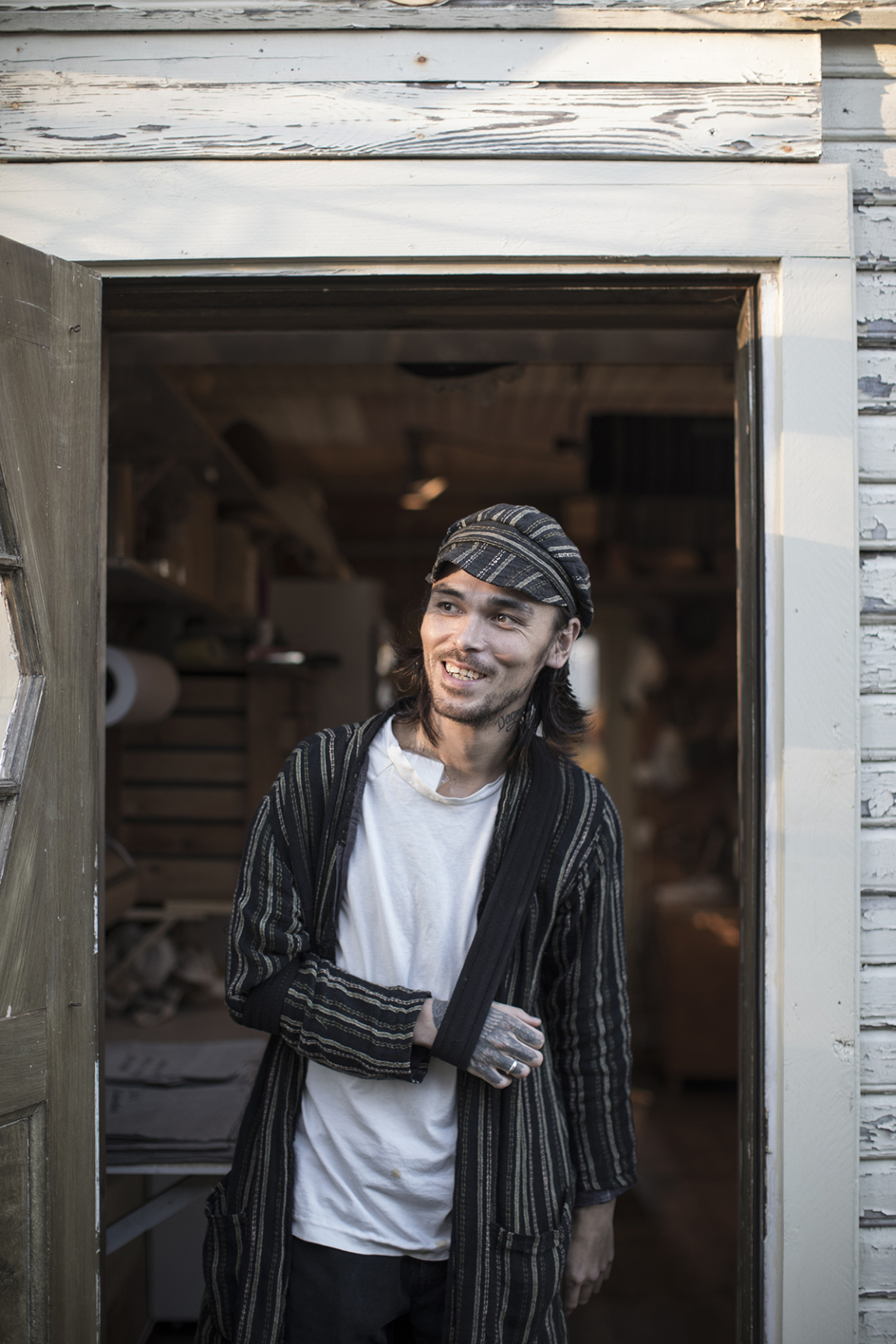
What's the process?
Karin: Makoto creates the finish. He burns them with flame. With a blowtorch. It's a very delicate procedure. Too much or too little will ruin a hat.
And what is your most popular style?
Karin: We want to make hats that you can wear every day. That you can easily put into your bag. It should be simple and not get in the way too much. So we create a lot of one-size hats where we've added lots of folds into the shape, so it can be scrunched down and made portable.
And we have also developed a stretch style, so you can wear it in various ways like when it's cold you can pull the hat down to cover your ears. They're hats that transform and you can find your own way of wearing. Hats, they should be practical. They're supposed to keep your head warm or protect you from the sun. It's not just an accessory. It has a purpose.
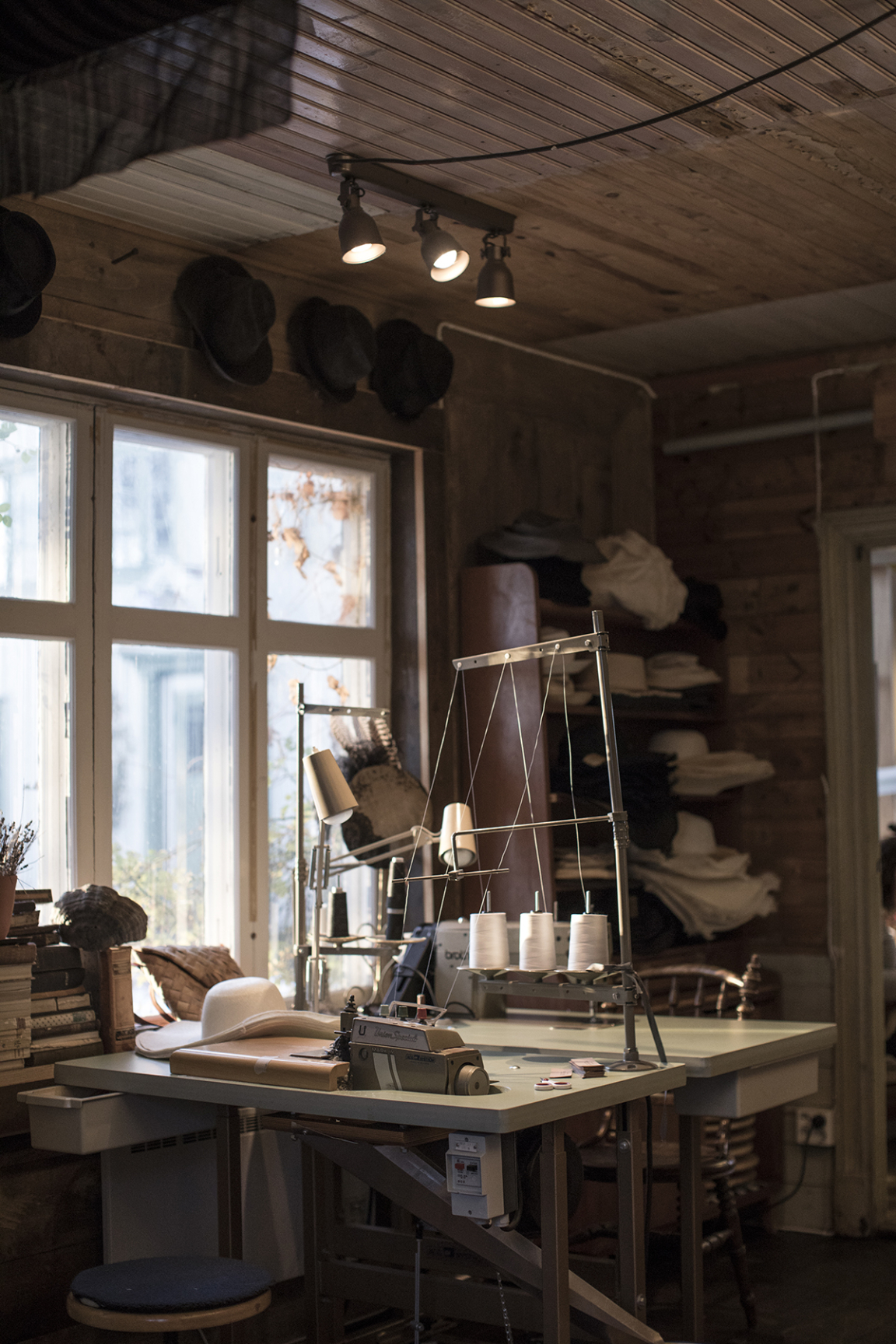
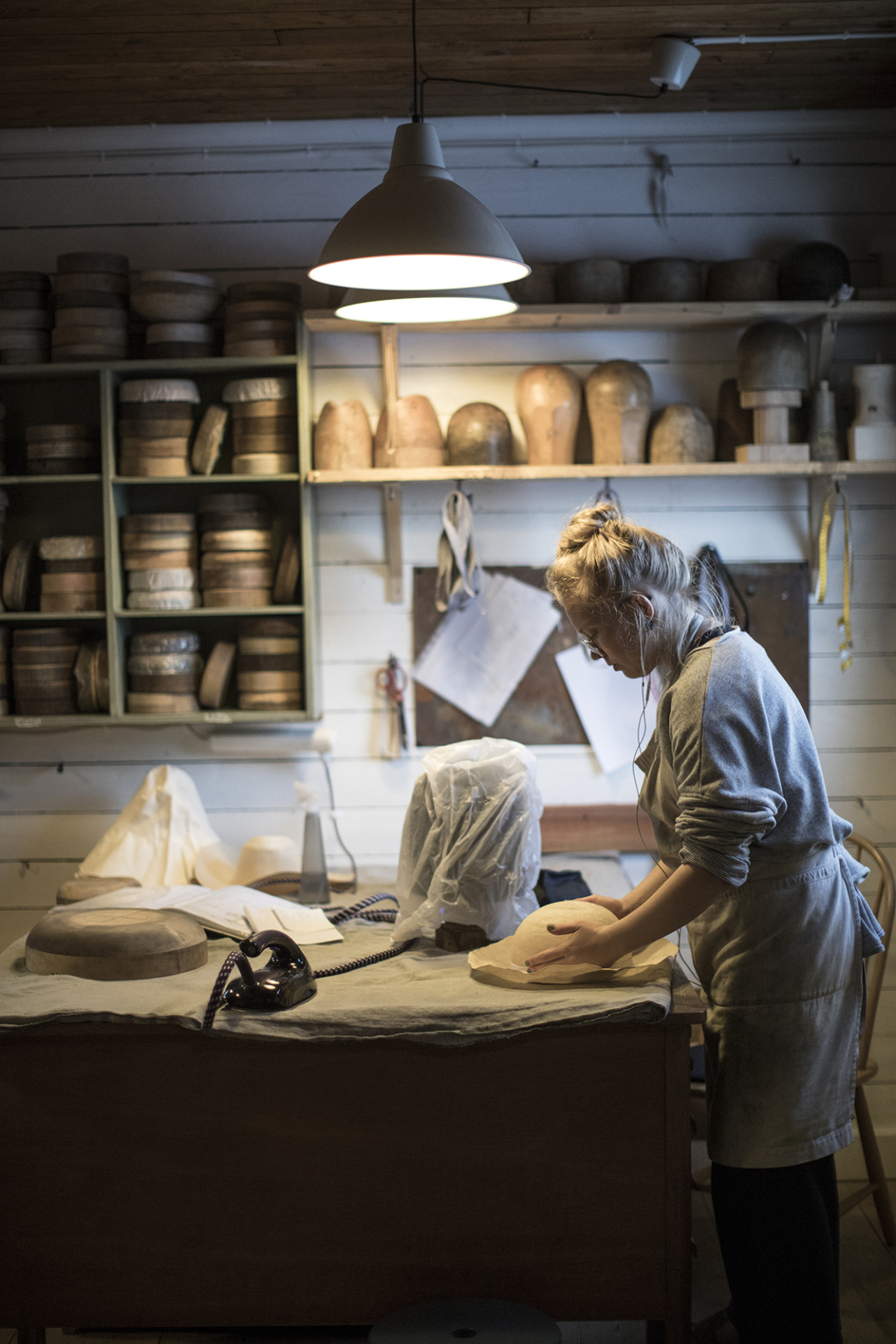
Are milliners a big thing here in Småland?
Karin: If you go back 70 years, there was a hat shop in every town in Sweden. But that was the same all around the world. Today, there's not really a tradition of hatmaking here. However, I think Sweden has become known for its fur felt clothing and accessories. It's a cold country, so we're going to find ways to stay warm.
With so few hatmakers left in the world, is it a dying craft?
Karin: Perhaps. It's really hard to find good quality hats because it's such a small market these days. Materials are disappearing all the time. As well as tools. We're lucky to have connections with a wholesaler who has antique stock that we can purchase and work with. Some of the fur felts are over 75 years old.
So you spend a lot of time searching for materials?
Karin: Yes, we do. We use all natural fibres. One of the latest materials we've started to use is wool felt, made in France. The quality is so high, you can shape it with your hands.
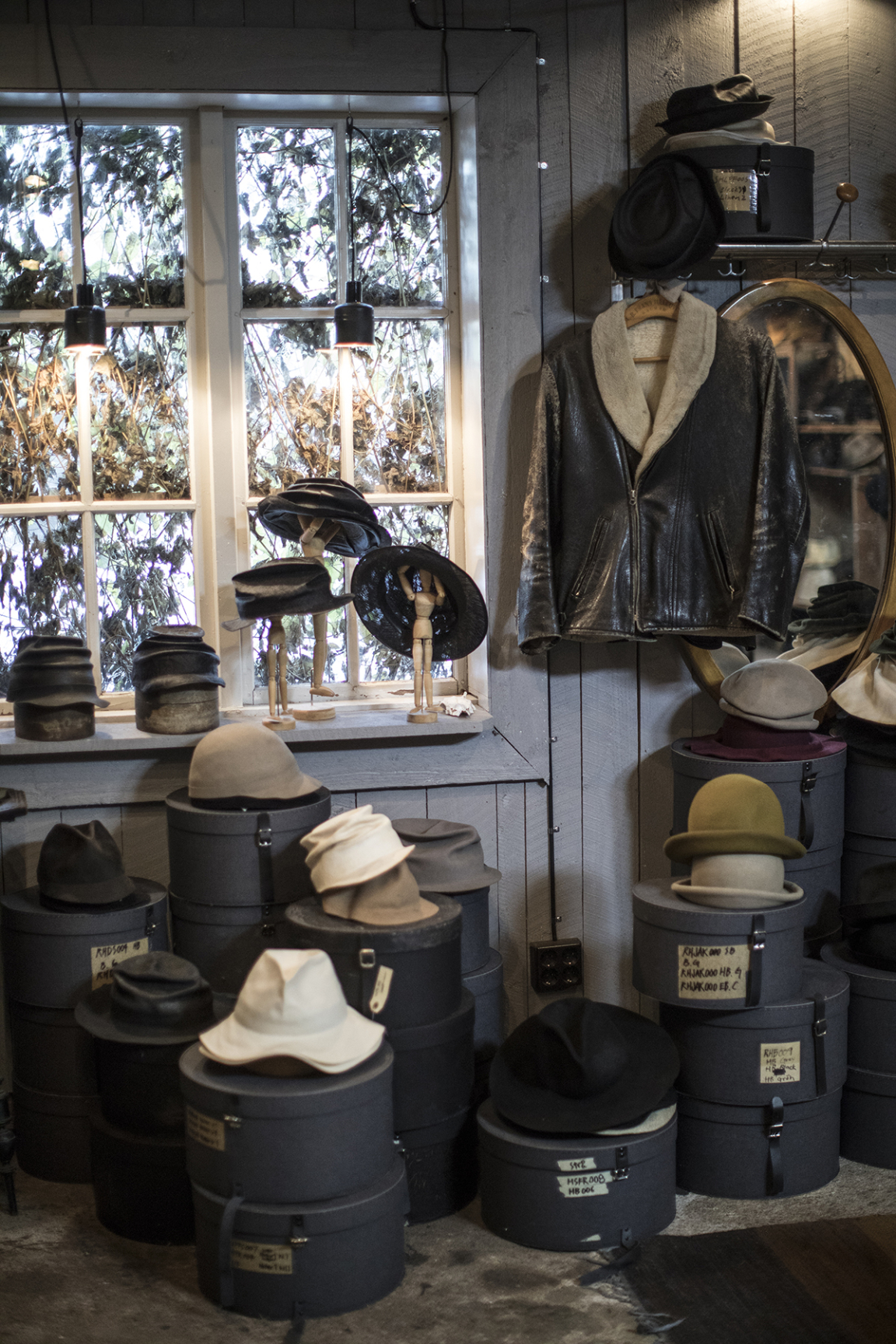
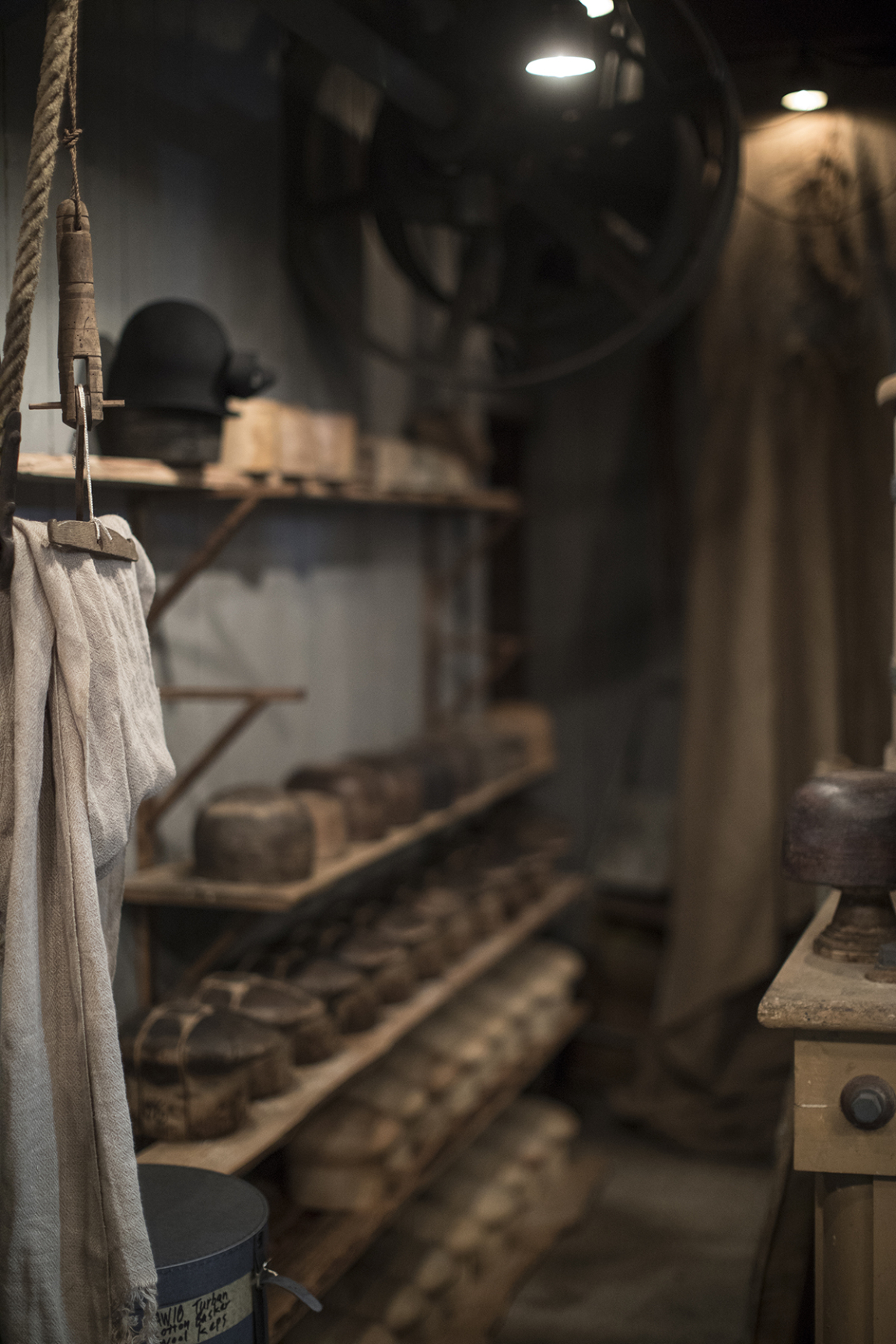
How do you manage to work together as husband and wife?
Makoto: We work on different things. My work is downstairs and underground.
Karin: He's the firestarter!
Makoto: Yes, I'm downstairs and playing with fire. So we're not together 24/7.
Karin: It helps that we're not very social people. We like our own company.
And why have you chosen the Swedish countryside as home?
Karin: I have family in this village, but I grew up 20km from here.
Makoto: We lived in Stockholm before, but our house was very small. We built our own studio but it wasn't that big. We then started to think about how we could expand our business. Especially after gaining such a good response in Paris and suddenly having lots of orders to deal with. We thought, should we move to a larger property and that's when we came out here. In the countryside, it costs barely anything.
So it was your suggestion, Makoto, to leave the city?
Makoto: Yes.
Karin: It took a couple of weeks for me to get used to the idea. And to accept that we'd be leaving the city. But it was the right thing to do and we're very happy. It gives you a lot of opportunities to work like this. There are no distractions. It's so much cheaper to live and to have so much space to work, it makes everything so much easier.
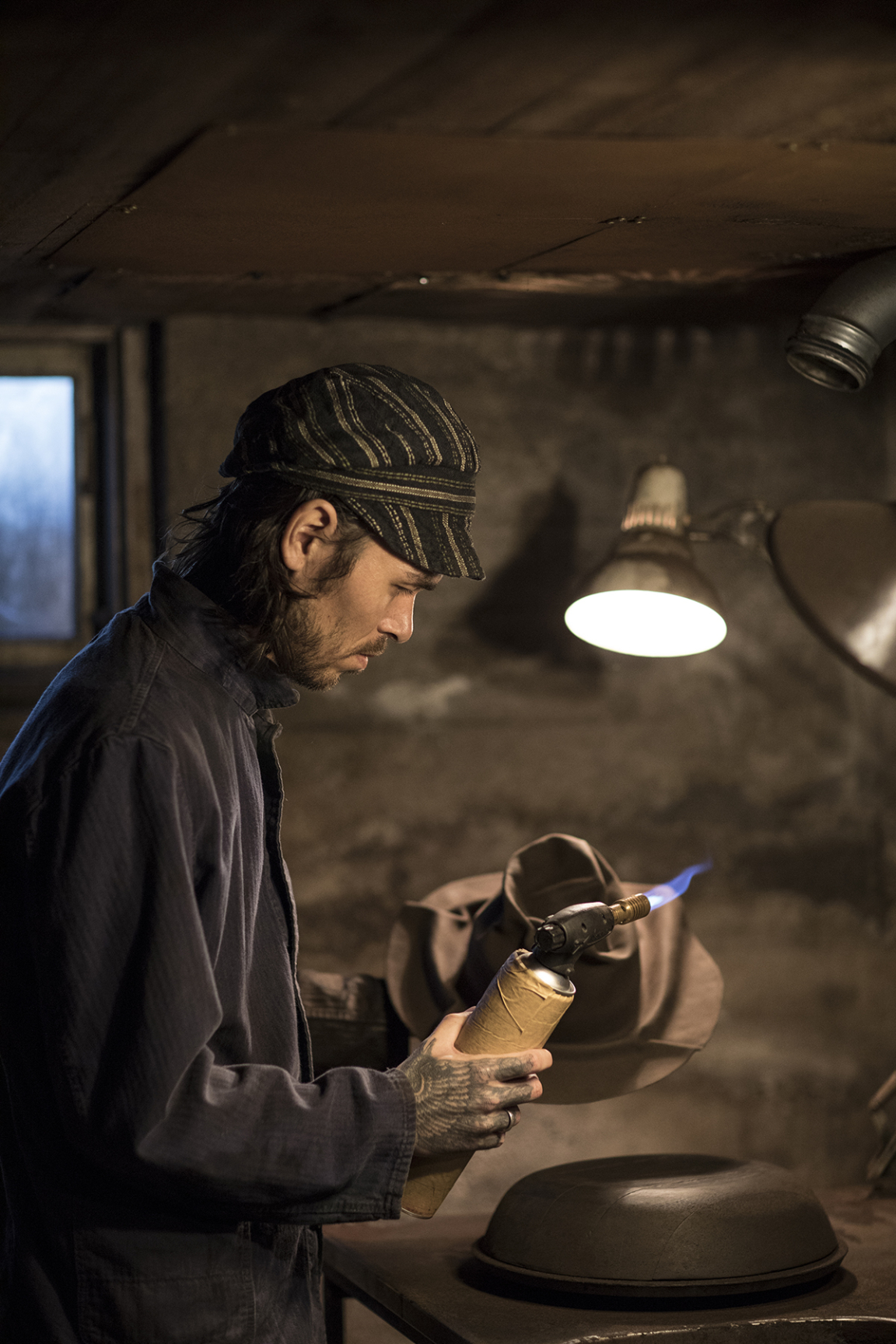
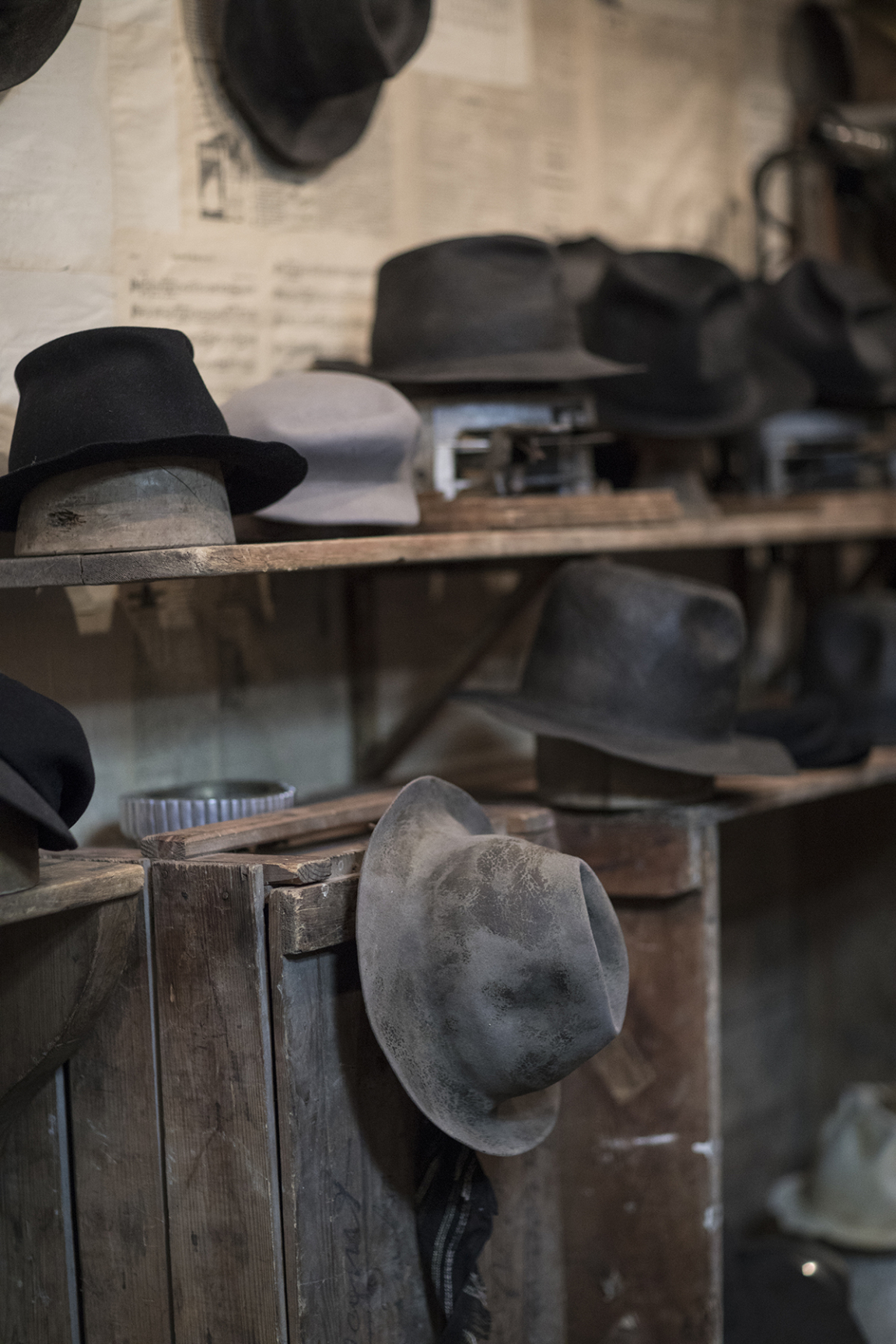
Is it easy to find skilled people to hire and work with you?
Makoto: We got lucky. It's definitely a challenge to find milliner students willing to live out in the countryside. But we've found people who have moved here from Gothenburg, for example.
Karin: We work so unconventionally, so if you're a trainee milliner, you will still need at least a year to learn our special techniques. We're lucky to have people willing to move here and work with us.
Do you always have to go through stockists?
Karin: We have created eleven collections to date, and with each one, we have at least 10 new styles. Half will be crafted from antique materials, the rest from new materials. We usually stick to the darker colours, which tend to be our most popular although we sometimes venture into more colourful shades, like purples, for instance.
Where do you get inspiration?
Makoto: We get our ideas when we see the material and feel it in our hands. You can't make what you want. You have to let the material decide.
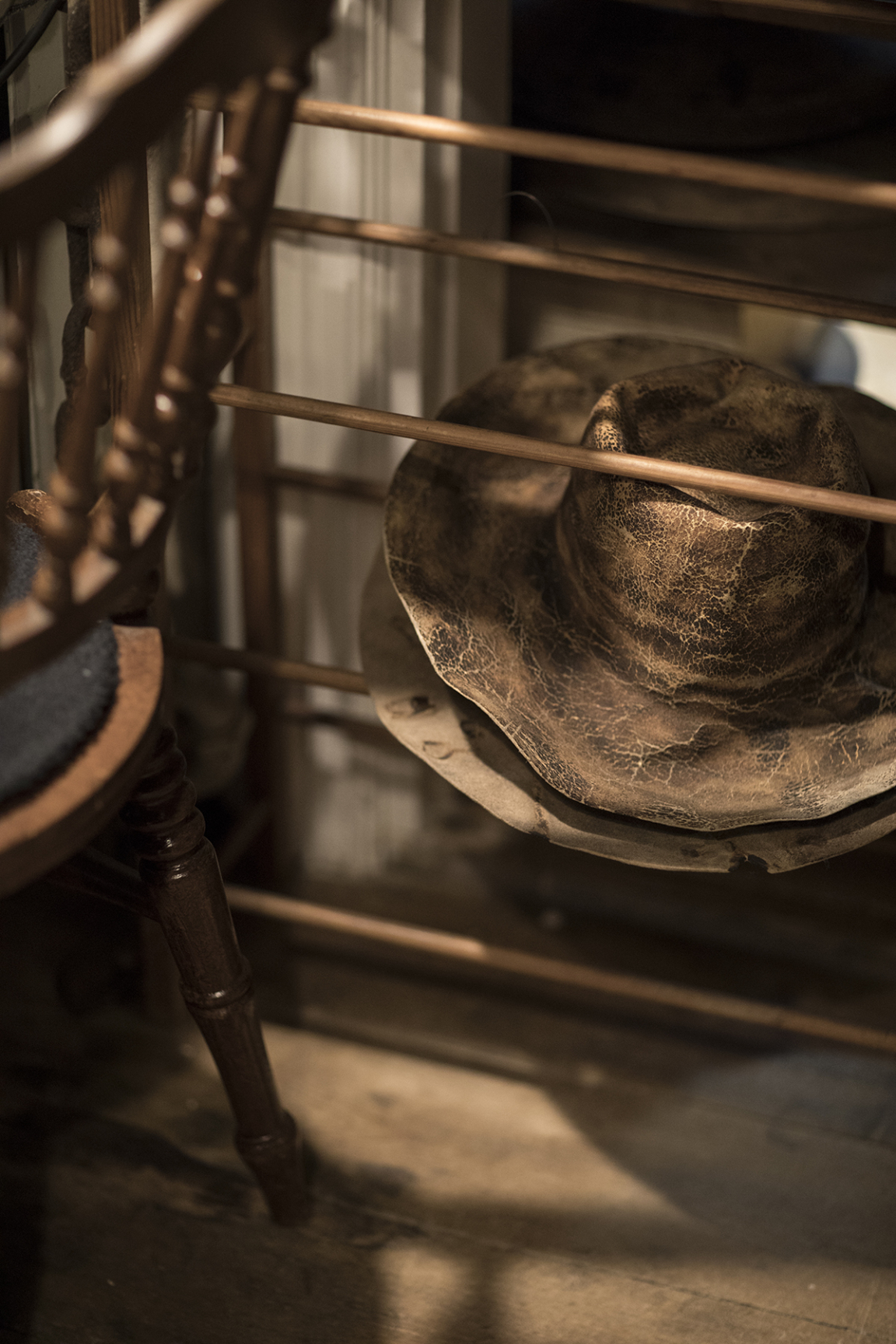
To find out more about Horisaki, visit horisaki.com or follow @horisakicom. Special thanks to Visit Sweden, and to photographer Tina Stafrén for the beautiful images. And thanks to Makoto and Karin Horisaki for warmly welcoming us into their studio.



